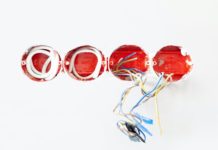Rear-facing baby seats are required for babies and infants. Compared to being unrestrained, this reduces the chance of death or injury in a crash by 90%.
An infant’s head, neck, and spine are better protected in rear-facing chairs than in forward-facing seats. As a result, keeping your child in a rear-facing seat is preferable for as long as feasible. Only move them to a forward-facing seat once they can sit up unassisted.
Also, when they have reached the seat’s maximum weight limit or are too big for the seat (typically when the top of the child’s head is higher than the seat’s top). Alternatively, you might use a larger (group 1 or group 2) rear-facing seat.
Rear-facing baby seats contain a shock-absorbing interior and a five-point harness (some have a three-point harness) to keep the child secure. Take your time getting your kid strapped in and ensuring the harness is properly set. Your baby’s shoulder should be roughly 2cm below the top of the harness.
Only one or two fingers should be able to fit between the baby’s chest and the harness when it’s on. The harness buckle should not cover the child’s tummy. Clothing can alter how snugly the harness fits, so make sure to check it before each trip.
If you’re using an i-size seat, ensure your child is rear-facing until they’re 15 months old. Rear-facing seats can be installed in either the front or rear of the vehicle, but it is safer in the back. If there is an active passenger airbag, DO NOT put them in the front passenger seat.
Rear-facing Child Seat Types
- From birth to 6 months, group 0 is for babies weighing 10 kg.
- Group 0+ for babies of 13 kg from the time of birth until the age of 12-15 months
- Groups 0+ and 1 are for babies weighing 18 kg, from birth to four years.
- Group 1 for toddlers weighing 9 to 18 kg, or around nine months to 4 years old.
- Groups 1 and 2 are for 9 kg to 25 kg toddlers or around nine months to 6 years old.
Visit our blog page to learn more about the benefits of rear-facing child safety seats.

Daisy is the engine behind Be-Safe.org — from content production to product reviews and more. What drives her is the passion to make home security information easily available.









